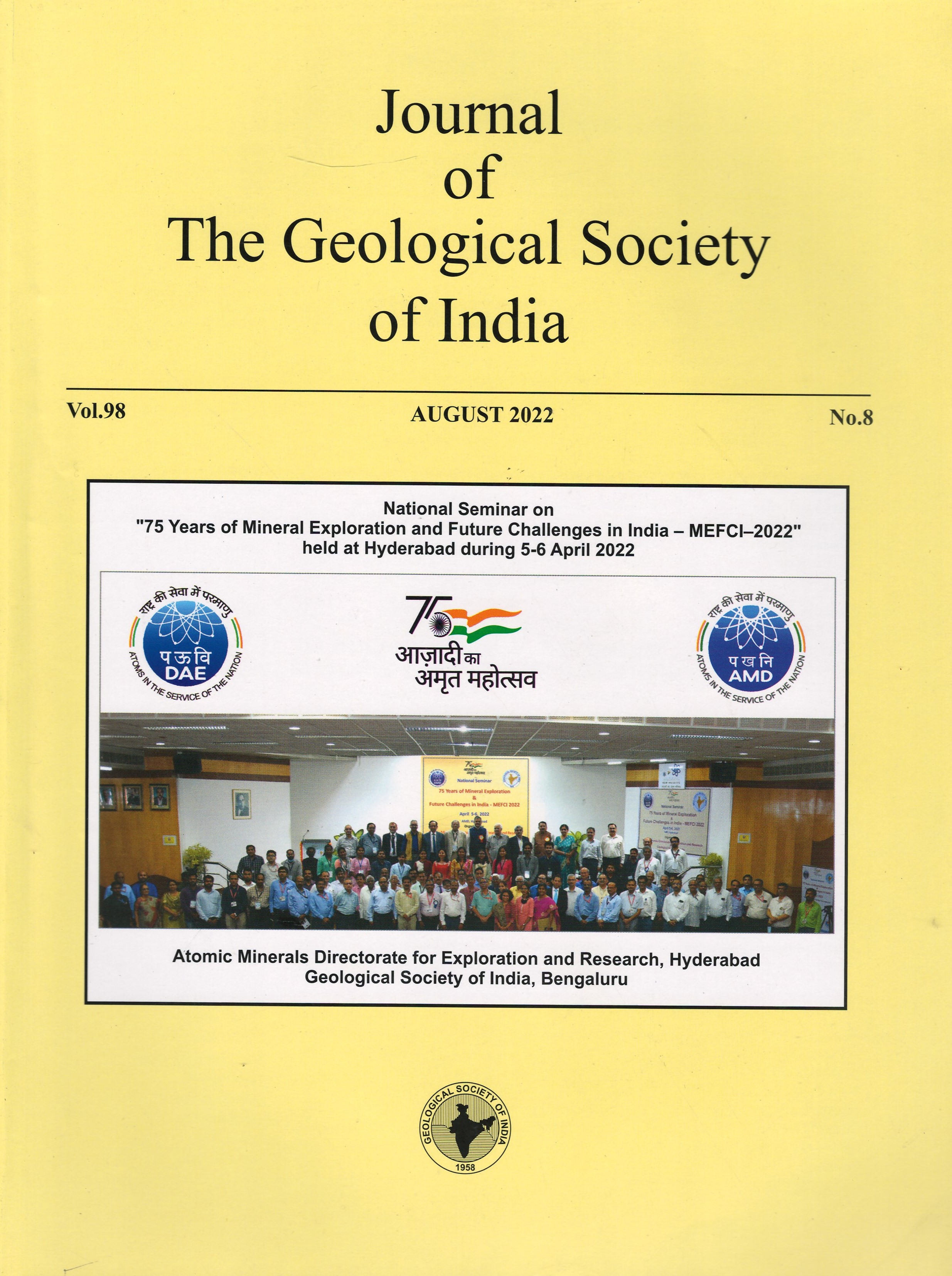Genesis of Magmatic Albitite Related Hydrothermal Uranium Mineralisation in Geratiyon-ki-Dhani, Sikar District, Rajasthan: Evidences from Fluid Inclusion Studies
DOI:
https://doi.org/10.1007/s12594-022-2126-7Keywords:
No KeywordsAbstract
Geratiyon-ki-Dhani (GKD) area is located in Khetri sub-basin of North Delhi Fold Belt and exposes metasediments of Ajabgarh Group. The Ajabgarh Group comprises quartz-biotite schist which is intruded by albitite and granite. The primary uranium phases viz. davidite and brannerite occurring with calcite and /or quartz veins are common in albitite. Quartz and calcite from mineralised albitite have been selected for characterization of the ore-forming fluid, which makes a promising uranium deposit.
Fluid inclusion petrography indicated presence of three (03) types of fluid inclusions (FIs) based on phases present at room temperature and mode of occurrence; polyphase (type 1a & 1b) and biphase (type 2) inclusions. Type 1a FIs are primary in nature and are composed of vapour bubble, salt crystals with <50% liquid phase and are irregular or negative crystal in shape varying in size between 12–23μm and occasionally contain hematite grain. The type 1a inclusions homogenised mostly by dissolution of salt crystal between 243-382°C (mode=340°C, n=30) corresponding to salinity of 34.32– 46.13 wt% NaCl-eq (mode=42wt% NaCl-eq, n=30). Type 1b FIs have vapour bubble, salt crystal with >50% liquid phase, occur as trans-granular trails and in clusters, having irregular shapes with size varying from <5–12μm. The inclusions homogenised by disappearance of salt crystals at 209 to 294°C (mode= 280°C, n=35) corresponding to salinity range from 29.03– 38.59 wt% NaCl-eq (mode=36wt% NaCl-eq, n=35).
A wide range of overlap is noted in salinity (34.32–38.59 wt% NaCl-eq) and homogenization temperature (243 – 294°C), histograms of type 1a & 1b inclusions suggest them to be part of a common fluid activity. Polyphase inclusions show simple cooling and follow halite saturation curve in salinity-temperature diagram. Biphase inclusions are invariably associated with type 1b and also show a cooling trend. On the basis of fluid characteristics, it is concluded that magmatic albitite has provided single mineralising solution resulting in davidite enriched mineralisation. The gradual cooling of high temperature (243- 382°C), high saline (34.32– 46.13 wt% NaC-leq) hydrothermal fluids has ensued U-mineralisation in GKD. The evidences presented here are significant as magmatic albitite hosted mineralisation is found for the first time in North Delhi Fold Belt of Khetri sub-basin of northwest India. It has opened a new concept for exploration which will help more resource addition.

 Anubhooti Saxena
Anubhooti Saxena






